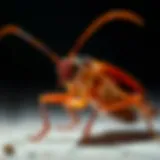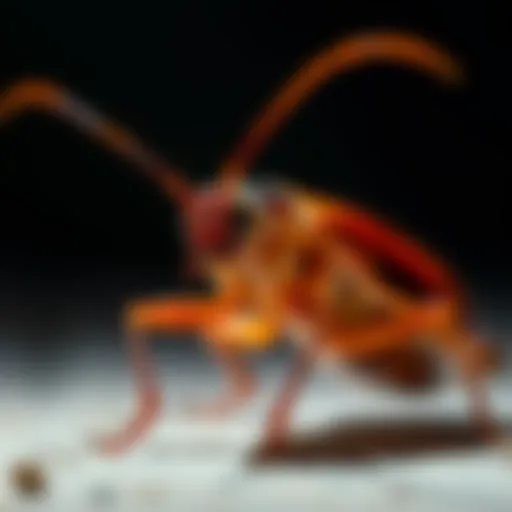Understanding Norway Rat Poison: An In-Depth Analysis
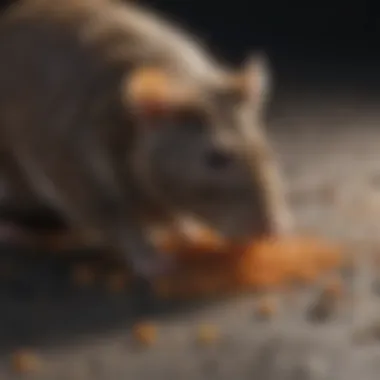

Intro
The use of poisons in pest control, especially for Norway rats, is a topic that warrants significant attention. Norway rats, also known as brown rats, thrive in urban environments and can pose severe risks to both health and property. Understanding the intricacies of Norway rat poison involves more than just a basic knowledge of chemicals. It requires a deeper look into how these substances work, their implications for human and pet safety, and the various methods available for effective management.
This article aims to dissect every aspect related to Norway rat poison, providing a comprehensive guide for homeowners and pest control professionals. We seek to inform our readers about the best practices in rodent management, ensuring the necessity for responsibility and awareness.
Identification of Common Pests
Description of Common Pests
Norway rats are a prevalent species found worldwide. They live in burrows and often establish nests in buildings or basements. Their fur is typically brown or gray with a lighter underside. These rodents are nocturnal, feeding at night on a wide range of food sources, which can include anything from scraps to pet food.
In addition to Norway rats, other common pests include roof rats and house mice. Each species has different behaviors and habitats, which can complicate control efforts.
Signs of Infestation
Identifying a rat infestation early can help mitigate damage and health risks. Common signs include:
- Droppings: Fresh droppings are a clear indicator. The droppings of Norway rats are larger than those of house mice.
- Gnaw marks: Norway rats have strong teeth that can easily chew through wood, plastic, and even lead.
- Tracks: Footprints or tail marks may be visible in dusty areas.
- Nests: Burrows and nests are often hidden but can be located by examing areas near food sources.
"A swift identification can significantly decrease the potential hazards associated with rodent infestations."
Prevention Techniques
Home Maintenance Tips
Preventing infestations starts with good home maintenance.
- Seal Entry Points: Inspect your home for gaps or holes. Rats can squeeze through tiny openings.
- Food Storage: Keep food in sealed containers. Ensure that pet food is also secure.
- Regular Cleaning: Maintain cleanliness. Crumbs left on the floor can attract rodents.
Environmental Modifications
Adapting the environment can be effective.
- Landscaping: Trim back any vegetation that is close to the house.
- Drainage: Ensure that all drainage systems are clear, preventing standing water which can attract pests.
Eco-Friendly Pest Control Options
Natural Pesticides
Choosing eco-friendly pest control methods can help reduce risks to human health and the environment. Natural pesticides such as diatomaceous earth can be effective against Norway rats. This powdered substance works by damaging the protective outer layer of insects and some small mammals, leading to dehydration.
Organic Pest Control Techniques
Those looking for organic methods can consider traps and repellents.
- Traps: Non-lethal traps can capture rats alive, allowing for release away from homes.
- Repellents: Certain essential oils, like peppermint oil, may deter rats.
Prolusion to Norway Rats
In this article, we will clarify the essential aspects of Norway rats, a prevalent pest causing various problems in urban and rural areas. Understanding their biology and behavior is crucial for effective pest control strategies, especially when poison is involved. Norway rats are more than just a nuisance; they are carriers of diseases and can damage structures and food supplies.
Biology and Behavior
Norway rats, Rattus norvegicus, are known for their adaptability and resourcefulness. They possess a robust body, usually measuring between 7 to 9.5 inches in length, with a tail that is shorter than their body. They have large, pointed snouts and small eyes. These physical traits facilitate their burrowing and climbing abilities.
Their behavior is opportunistic, feeding on a wide variety of food sources. Norway rats are primarily nocturnal, which means they are most active at night, searching for food and water. They are social animals, often living in colonies where they establish a hierarchy. Strong pheromonal communication plays a significant role in their social interactions.
Key traits:
- Opportunistic feeder
- Nocturnal habits
- Social structures in colonies
Understanding these traits aids in crafting effective rodent control methods. Knowledge of their dietary preferences and nesting behaviors can inform the proper placement of poison to increase efficacy while minimizing danger to non-target species.
Habitat Preferences
Norway rats show a preference for environments that provide shelter and accessibility to food and water. These habitats typically include urban areas, agricultural fields, and near waste disposal sites. They often burrow in soil or live in sewers, attics, and basements, where they are less likely to be disturbed.
Common habitats include:
- Urban infrastructure like basements and sewers
- Agricultural settings with abundant food supplies
- Areas with human waste, as it provides easy access to nourishment
By understanding these habitat preferences, homeowners and pest control professionals can better identify potential nesting sites. This information can lead to more targeted and effective control measures, which is vital in managing Norway rat populations.
"Effective pest control starts with understanding the biology and habitat preferences of the target species.”
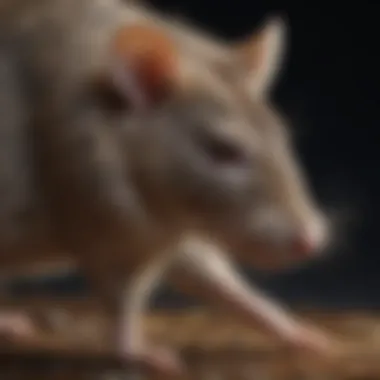

This understanding sets the stage for discussing the various methods available for controlling Norway rats, including the use of poisons. Having this foundation helps in making informed decisions regarding pest management strategies.
The Importance of Rodent Control
Rodent control plays a critical role in maintaining public health and safeguarding economic stability. Norway rats, in particular, are known for their rapid reproduction and adaptability. Their presence can lead to numerous problems, making effective control essential for both individual homes and the broader community. Understanding the necessity of rodent control equips homeowners and pest control professionals to take informed actions.
Public Health Concerns
Norway rats are carriers of several diseases, which pose significant risks to human health. They are known to transmit illnesses such as leptospirosis, hantavirus, and salmonella, among others. These diseases can affect not only those who directly interact with rats but also others who come into contact with contaminated surfaces or materials.
The droppings and urine from Norway rats can easily contaminate food and water sources. This can happen even in homes that seem clean. To mitigate these risks, it is paramount for homeowners to understand the health implications attached to these animals. Their constant gnawing for food can also damage electrical wiring and plumbing, creating further hazards.
Effective rodent control is not merely about extermination; it is a vital public health measure that prevents the spread of dangerous diseases.
A proactive approach to rodent control through proper waste management, home sealing, and algorithmic poison application can significantly reduce these health risks. Implementing integrated pest management strategies can pave the way for a healthier living environment for families.
Economic Impact
From a financial perspective, the influence of Norway rat infestations can be substantial. Damage to property from gnawing on structures and wiring can lead to costly repairs. Moreover, businesses might experience disruptions in service, loss of reputation, and reduced customer trust if rat sightings are reported.
The agricultural sector is not immune either. Norway rats pose threats to both crops and livestock, leading to direct economic losses. They can consume a large portion of stored grains and other feed, which is detrimental to farmers’ livelihoods. The financial burden of dealing with these pests often extends beyond the immediate costs of control methods; the long-term impacts can ripple through local economies.
To illustrate the economic repercussions, consider instances where pest control measures have prevented costly damages:
- Reduced repair costs from electrical issues caused by rats.
- Decreased food waste and losses in agriculture.
- Improved customer confidence and satisfaction for businesses.
It becomes clear that prioritizing rodent control is not just a matter of health; it also includes significant economic considerations. Failure to manage rat populations can lead to escalating expenses that affect families and businesses alike.
Types of Rodent Poisons
Understanding the different types of rodent poisons is crucial in effective Norway rat control. These products are designed to target specific biological mechanisms in rats, ensuring they are lethal while minimizing risk to non-target species and humans. Each type offers distinctive benefits and considerations, making it essential to have a comprehensive understanding of the options available.
Anticoagulants
Anticoagulants are perhaps the most widely recognized group of rodenticides. These poisons work by interfering with the rat's ability to produce blood-clotting factors, ultimately leading to fatal hemorrhage. The process takes days, which allows rats to feed on the bait multiple times before symptoms appear.
One of the primary advantages of anticoagulants is their effectiveness against even resistant rat populations. Certain strains of Norway rats have developed tolerance to other types of poisons but still succumb to anticoagulant treatment. Anticoagulants are typically categorized into two groups: first-generation and second-generation anticoagulants.
First-generation anticoagulants, such as warfarin and chlorophacinone, require multiple feedings to achieve a lethal dose. In contrast, second-generation anticoagulants, like bromadiolone and brodifacoum, are far more potent, allowing for a single feeding to be fatal. However, the easier efficacy of second-generation types raises concerns regarding secondary poisoning, especially in wildlife and pets.
Neurotoxins
Neurotoxins offer another approach to rodent control. These substances target the rat's central nervous system, leading to paralysis and ultimately death. For instance, compounds like bromethalin and cholecalciferol (vitamin D3) act rapidly, often within hours, making them suitable for urgent infestations.
The primary benefit of neurotoxins is their quick action, which can help manage severe rodent issues swiftly. However, this rapid lethality comes with increased risks. For instance, some neurotoxins leave behind significant amounts of bait that can be harmful to non-target animals if ingested. Moreover, these products are generally less forgiving than anticoagulants; a miscalculated dosage could lead to higher risks of accidental poisoning for household pets or wildlife nearby. This highlights the importance of careful application and strict adherence to label instructions when using neurotoxins.
Natural and Organic Poisons
The growing interest in environmental sustainability has led to a rise in natural and organic poisons. These methods often utilize botanical extracts or enzymes to offer a less harmful alternative for rodent control. Substances like essential oils, neem, or even diatomaceous earth work by disrupting the biological processes of rats. While these products are often regarded as safer around children and pets, their efficacy can be hit-or-miss compared to synthetic options.
Using natural poisons may also require more significant effort and knowledge to apply effectively. Homeowners must be prepared to employ these tactics consistently and understand the specific behaviors of Norway rats to achieve successful results. However, if implemented correctly, natural and organic poisons can provide a humane, effective method of dealing with rodent infestations while being more considerate of broader ecological impacts.
In summary, understanding the types of rodent poisons is vital for safe and effective rat control. Each category—anticoagulants, neurotoxins, and natural options—comes with distinct advantages and risks, making it imperative to weigh these factors before choosing a method for Norway rat management.
Mechanisms of Action
Understanding the mechanisms of action for rat poisons is crucial for effectively managing Norway rat populations. This section will explore how these poisons interact with biological systems, leading to the death of the target species. It is essential for homeowners and pest control experts alike to grasp why certain poisons are chosen over others and what implications this has for use in residential areas and beyond.
How Anticoagulants Work
Anticoagulants are a widely used class of rodenticides, and their mechanism is clear yet significant. These substances inhibit the vitamin K cycle, which is necessary for producing clotting factors in the blood. Ultimately, when a rat ingests anticoagulants, it leads to internal bleeding, which may take several days to manifest. This slow action is advantageous as it allows the rat to continue feeding on the bait, increasing the likelihood of the poison being consumed.
In most cases, anticoagulants are divided into two generations. First-generation anticoagulants, like warfarin, require multiple feedings to become effective, making them less potent. Conversely, second-generation anticoagulants, such as bromadiolone or brodifacoum, are much stronger and can cause death with a single feeding. The effectiveness and residual activity of these poisons pose substantial risks, particularly in terms of secondary poisoning of non-target species. Therefore, knowing how these mechanisms work is important for anyone considering their use.
The Function of Neurotoxins
Neurotoxins operate quite differently from anticoagulants. These poisons target the nervous system of rats, leading to paralysis and eventual death. When rodents consume neurotoxins, the active ingredients disrupt normal neurological functions. For example, substances such as bromethalin increase the permeability of cell membranes to sodium, leading to cellular swelling and resulting in a range of neurological symptoms, from tremors to seizures.
The speed with which neurotoxins take effect can further complicate their use. Unlike anticoagulants, which allow rats to continue to behave normally before dying, neurotoxins induce immediate behavioral changes, making it crucial to monitor the affected area. Moreover, the risk associated with neurotoxins extends beyond just the target species. Human and pet exposure can lead to severe health consequences, emphasizing the need for careful application.
Understanding these mechanisms assists consumers in making informed choices. It highlights the responsibility required in aplicating these substances safely and ethically.
By recognizing how anticoagulants and neurotoxins work, homeowners can better evaluate the risks and benefits of using rat poisons as part of their pest control strategies.
Application Methods for Rat Poison
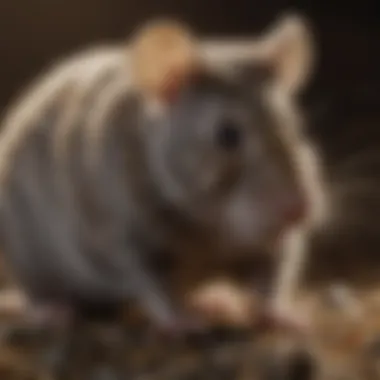

The application methods for rat poison play a crucial role in the effectiveness of rodent control strategies. Understanding how to properly deploy these poisons is essential for achieving desired outcomes while minimizing risks to non-target species and ensuring human safety. Each method has its specific benefits and considerations, making it vital for homeowners to be informed about the options available.
Bait Stations
Bait stations are designed to attract Norway rats while keeping the poison contained and away from non-target animals. These stations can be highly effective for several reasons. First, they allow for controlled access to the bait. By placing poisons within a secure enclosure, the risk of accidental exposure to pets and children is reduced significantly. Second, bait stations can be strategically positioned in areas where rat activity is most frequent, increasing the likelihood of successful poisoning.
Homeowners should select stations that are robust and tamper-resistant. Furthermore, the bait should be inspected regularly to ensure that it remains fresh and appealing to rats. A proper placement strategy is important, as bait stations should be located along known rat pathways or in areas like basements, attics, and near garbage disposal sites to maximize effectiveness.
Effective placement of bait stations is critical for controlling rat populations. They should be close to nesting and feeding sites, which ensures higher chances of rodent encounters.
Tracking Powder
Tracking powder provides a different approach for managing Norway rats. This method involves applying a fine powder that the rats pick up on their fur as they traverse treated areas. Unlike baits that rely on ingestion, tracking powders work by contaminating the rat's body. The substance is typically designed to be palatable, encouraging the rodents to groom themselves, resulting in consumption of the poison.
One advantage of tracking powder is that it can be used in sensitive environments where bait stations may not be suitable. For instance, it can be applied in crawl spaces or within wall cavities. However, it is essential to ensure the powder is placed in concealed areas to prevent it from affecting pets or wildlife. Additionally, users must wear protective gloves during application to avoid accidental ingestion or contamination.
Direct Injection Techniques
Direct injection techniques involve inserting poison directly into the rat's body. This method is often used in cases where other methods have failed, or where there is a critical need to control rapid infestations. This approach can be effective in targeting specific individuals, such as larger infestations or when dealing with particularly resistant populations.
Applying this technique requires a certain level of expertise. Typically, a veterinarian or pest control professional would perform it, as improper handling can lead to ineffective treatment or unnecessary suffering. Also, it is imperative that individuals using this method adhere to safety protocols to avoid potential harm to themselves and non-target animals.
Direct injection is not a common practice for the average homeowner due to its complexity and associated risks. Therefore, it is most suitable for controlled environments where other methods have proven inadequate.
In summary, each application method for rodent poisons offers unique benefits and challenges. Homeowners must assess their individual circumstances and choose the most appropriate ways to manage Norway rat populations while considering safety and environmental impacts.
Risks and Side Effects
When discussing Norway rat poison, it is essential to examine the risks and side effects associated with its use. While rodenticides play a significant role in controlling rat populations, they pose potential threats to both non-target species and human health. Understanding these elements is vital for making informed decisions when dealing with rodent infestations. Not only does this knowledge help in selecting appropriate methods of control, it also emphasizes the importance of using these poisons responsibly.
Non-target Species
Non-target species are animals that may be affected by poisons meant for Norway rats. These can include pets, wildlife, and beneficial insects. When rodenticides are used, the unintended consequences can lead to severe ecological impacts. For instance, birds of prey can ingest poisoned rats, transferring the toxins up the food chain.
- Pets like dogs and cats are particularly at risk. Even a small amount of rodenticide can result in poisoning or even death. This emphasizes the need for secure placement of bait stations away from areas where pets may access them.
- Wildlife, including raccoons or foxes, can also consume toxic rats, leading to potential population declines in sensitive species.
- Beneficial insects that help maintain ecological balance may also be impacted if they come into contact with toxins or poisoned rats.
The risks imposed on non-target species reinforce the idea that pest control should prioritize strategies that minimize collateral damage, highlighting the importance of considering ecological health when implementing rat control measures.
Human Health Risks
Human health risks from Norway rat poison should not be overlooked. The potential for accidental exposure to these poisons could result in significant health issues for children and adults alike. Key concerns include:
- Accidental Ingestion: Children might mistake bait for candy. Ensuring that poison is stored safely and correctly is critical.
- Inhalation: Dust from powdered poisons can be inhaled, potentially causing respiratory issues.
- Skin Contact: Handling bait without proper protection can lead to irritation or allergic reactions.
Another notable aspect is the long-term impact of poisoned rats. When a rat consumes poison and then dies, there's a risk of secondary exposure. This could affect not just human health but also pets and wildlife that may find and consume the carcasses.
It is crucial to adhere to safety guidelines and label instructions to mitigate these risks. Proper disposal of dead rodents also plays a role in reducing further exposure.
In summary, the risks and side effects of Norway rat poison are multi-faceted. They encompass dangers to non-target species and human health risks, which cannot be ignored. Recognizing these dangers provides a framework for developing responsible rodent control strategies.
Regulations Governing Rodenticide Use
The use of rodenticides, particularly those targeting Norway rats, is a matter of significant importance in pest control. Understanding regulations governing rodenticide use helps ensure that homeowners and professionals implement these chemical controls safely and effectively. Each country has its own set of laws and guidelines that dictate how these substances may be used, emphasizing safety for both humans and the environment.
These regulations aim to minimize health risks associated with rat poisons, not only for the individuals applying them but also for children and pets who might accidentally come into contact with these toxic substances. Additionally, they address environmental concerns stemming from the improper use of these chemicals, ensuring that their impact on non-target species is limited. Following these guidelines promotes responsible pest management practices.
State and Federal Guidelines
State and federal guidelines are established to ensure the responsible use of rodenticides. These laws address various aspects, such as the approved types of poisons, methods of application, and the necessary training for individuals handling these substances. Each state may have variations in their regulations, reflecting local ecological conditions and public health issues.
Being aware of these specific guidelines is crucial for homeowners. For example:
- Regulatory agencies often release lists of approved rodenticides.
- Some states may impose restrictions on where poisons can be placed or how they can be used.
- Notification requirements may exist for densely populated areas to ensure communities are informed when poisons are being employed nearby.
Understanding these guidelines aids consumers in making informed decisions and ensures better outcomes in rodent control efforts.
Labeling Requirements
Labeling requirements are critical in the rodenticide market. Every pesticide, including those used for Norway rat control, must adhere to specific labeling criteria laid out by government agencies. This labeling provides essential information for the potential users. Important aspects of labeling include:
- Active ingredients: Listing the chemicals that compose the rodenticide gives users insight into the poison’s potential risks and mechanisms of action.
- Usage instructions: Clear guidelines on application methods and dosages help ensure proper handling and effectiveness.
- Safety precautions: Labels should specify necessary safety measures, such as protective gear or instructions on what to do in case of accidental exposure.
- Storage and disposal: It is also essential to know how to properly store and dispose of the product to prevent accidental exposures or environmental contamination.
By following labeling requirements, users help minimize the risks associated with rodenticides, protecting themselves, their families, and the environment.
In summary, understanding regulations and labeling requirements is essential for anyone considering the use of Norway rat poisons. These guidelines ensure safety and efficacy while promoting responsible pest management practices.
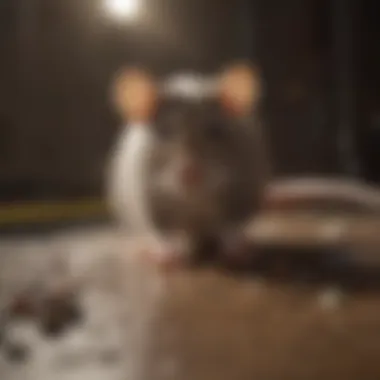

Sustainable Alternatives to Chemical Poisons
Sustainable alternatives to chemical poisons represent an important aspect of rodent management. Many homeowners and pest control professionals seek methods that are not just effective but also environmentally responsible. The increasing awareness of the dangers associated with chemical poisons is leading to a rise in demand for safer solutions. These sustainable alternatives offer various benefits that can enhance the effectiveness of rodent control strategies while minimizing risks to non-target species, humans, and the ecosystem.
One key benefit of sustainable alternatives is their ability to reduce unintended harm. Organic pesticides and traps can effectively target Norway rats without posing significant risks to pets or wildlife. This becomes especially important in residential areas where children and domestic animals are present. By choosing methods such as trapping or habitat modification, individuals can create a safer environment for all living beings.
Additionally, these alternatives typically have fewer regulatory constraints compared to chemical rodenticides. Many chemical poisons have strict guidelines governing their use due to potential human health risks. In contrast, sustainable methods often do not carry the same level of scrutiny, allowing for more flexibility in their application.
Moreover, sustainable approaches tend to foster a more holistic view of pest management. This view emphasizes the need to address underlying issues that allow rodent populations to thrive. By focusing on prevention rather than solely extermination, homeowners can maintain healthier living environments over time.
In summary, adopting sustainable alternatives to chemical poisons not only addresses immediate rodent concerns but also promotes long-term welfare for the ecosystem.
Trapping Techniques
Trapping techniques play a crucial role in sustainable pest management. These methods can be both humane and efficient at controlling Norway rat populations. There are various types of traps available in the market, each designed with specific rodent behavior in mind.
Snap traps are one of the most common choices. They are designed to quickly kill the rodent, minimizing suffering. Proper placement is critical to ensure effectiveness. Traps should be positioned where rats are likely to travel, such as along walls or near food sources.
Live traps offer another humane option. These traps capture rats alive, allowing for release in an appropriate location away from residential areas. While effective, it is essential to monitor live traps regularly to prevent undue stress on the captured animals.
Using traps involves considerations like:
- Bait Selection: Foods like peanut butter, dried fruit, or commercial baits can attract rats effectively.
- Placement: Traps should be set in areas of high activity, which can be identified by droppings or signs of gnawing.
Integrating multiple trapping techniques may enhance success. It's vital to follow local guidelines and laws regarding the capture and release of trapped rodents.
Habitat Modification
Habitat modification serves as another pillar of sustainable pest management. By altering the environment, homeowners can make their properties less attractive to Norway rats. This method focuses on prevention rather than reaction, which is crucial in long-term rodent control.
Key aspects of habitat modification include:
- Eliminating Food Sources: Properly storing food, both human and pet, is vital. Sealing containers and reducing outdoor food waste can significantly decrease rat attraction.
- Reducing Shelter Opportunities: Cutting back vegetation, sealing holes in buildings, and removing clutter can limit the safe nesting areas available to rats.
- Managing Waste: Regularly disposing of trash and using secure bins can prevent rats from finding easy meals.
"An ounce of prevention is worth a pound of cure." This old adage holds especially true in the context of rodent control. By proactively managing the space around your home, you can greatly diminish the chances of infestation.
Consumer Considerations Before Use
Understanding consumer considerations before using rat poison is crucial. Homeowners must approach rodent control with thorough awareness of not only the poisonous substances themselves but also the overarching impacts these choices can have. This section outlines essential aspects that need consideration, focusing particularly on cost, efficacy, and safety.
Cost Analysis
Cost is often a primary factor when selecting rat poisons. Various products are available on the market, and their prices can differ significantly. When evaluating options, it is important to examine more than just the purchase price. For example, a lower-cost poison may require more frequent applications or additional tools that add to the overall expense.
- Initial Purchase Costs: Some poisons can seem inexpensive upfront, but they may not be the most effective in the long run.
- Long-term Investment: Considering the potential need for multiple purchases can provide a clearer picture of overall cost.
- Professional Services: In some cases, hiring pest control experts can be more cost-effective than buying products, as they may provide guaranteed results while minimizing risks.
While it may be tempting to opt for the cheapest solution, a deeper inquiry into effectiveness and safety may yield better value for money.
Efficacy and Safety
Efficacy and safety are two pivotal factors that cannot be overlooked when considering the use of rat poisons. It is necessary for consumers to understand how effectively these poisons function against Norway rats and what risks they pose, including to non-target species and humans.
Efficacy
- Different rodenticides have varying levels of effectiveness against rats. For instance, anticoagulants are prevalent for their success in reducing rat populations. However, rats may develop resistance over time, which necessitates changing approaches.
Safety Concerns
- Consumers must consider safety, not just for themselves but also for pets and children. Selecting products with clear labeling and guidelines can help mitigate risks. Always ensure proper storage away from living areas and children.
"Knowledge is power; understanding poisons will aid homeowners in making safe, informed decisions about rodent control."
In summary, when selecting rat poison, careful consideration of cost, efficacy, and safety is necessary. By analyzing these factors, homeowners can safeguard their environment while effectively controlling Norway rat populations.
Culmination
The topic of rat poison is significant in addressing the challenges presented by Norway rats. In this article, we covered essential aspects like the types of poisons available, their methods of action, and the possible risks involved in their use. Rat populations can lead to severe public health concerns, making effective control measures crucial for homes and communities.
Summarizing Key Points
To summarize, we explored various facets of Norway rat poison, including:
- The biological and behavioral characteristics of Norway rats, which aid in understanding their infestation habits.
- The significance of controlling rat populations for public health and economic stability.
- Different classes of rodenticides, like anticoagulants and neurotoxins, illustrating their mechanisms and effectiveness.
- Application methods that include bait stations and direct injections, emphasizing practical use in pest management.
- The importance of considering the risks to non-target species and human health when using rodenticides.
- Regulatory frameworks guiding the use of these chemicals to ensure safety and accountability.
- Alternative strategies to chemical poisons such as trapping and habitat modifications, important for sustainable pest control.
- Finally, consumer considerations regarding costs and safety when selecting rodent control solutions.
"Effective rodent control is not just about eliminating pests; it is about doing so responsibly to protect both our environment and our health."
Future Directions in Rodent Control
Looking ahead, rodent control strategies will likely evolve with growing awareness of environmental impacts and safety concerns. Some future directions may include:
- Increased research into bio-based alternatives: The demand for organic solutions to pest control is rising. This could lead to the development of new substances that are effective against Norway rats but lessen the risk to other wildlife and pets.
- Technological advancements in traps: Smart traps equipped with sensors and monitoring systems may provide humane, efficient solutions by alerting homeowners when a rat is caught, simplifying the process of management.
- Public education initiatives: Raising awareness on integrated pest management (IPM) can help homeowners better understand how to prevent infestations and use poisons responsibly, if necessary.
- Collaborative strategies between homeowners and pest control professionals: Emphasizing partnerships can lead to more effective methods of management, ensuring that all parties are on the same page in tackling this common issue.




